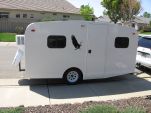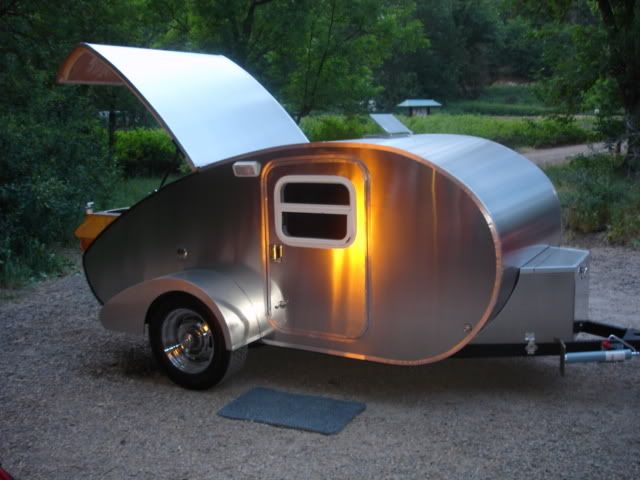Uniframe?
20 posts
• Page 1 of 2 • 1, 2
Uniframe?
My first post.
Been on the forums for a while just reading. I've been going through a lot of different build threads for inspiration for my own design and I have noticed two types of internal frames on insulated walls. The first is just the typical straight spars spaced evenly apart and stabilized with horizontal cross members, the second is more of a "Uniframe" of sorts where the entire profile is cut from plywood and then internal sections are routed out for what I assume to be sections for insulation/weight reduction.
I was wondering if I could get some more information on the Uniframe type. Pros and cons, etc?
I tried searching for this but don't really know what to look for.
Thanks
Been on the forums for a while just reading. I've been going through a lot of different build threads for inspiration for my own design and I have noticed two types of internal frames on insulated walls. The first is just the typical straight spars spaced evenly apart and stabilized with horizontal cross members, the second is more of a "Uniframe" of sorts where the entire profile is cut from plywood and then internal sections are routed out for what I assume to be sections for insulation/weight reduction.
I was wondering if I could get some more information on the Uniframe type. Pros and cons, etc?
I tried searching for this but don't really know what to look for.
Thanks
- Khughes222
- Teardrop Inspector
- Posts: 14
- Joined: Thu Apr 05, 2012 1:05 am
Re: Uniframe?
Khughes222 wrote:I have noticed two types of internal frames on insulated walls. The first is just the typical straight spars spaced evenly apart and stabilized with horizontal cross members, the second is more of a "Uniframe" of sorts where the entire profile is cut from plywood and then internal sections are routed out for what I assume to be sections for insulation/weight reduction.
I was wondering if I could get some more information on the Uniframe type. Pros and cons, etc?
I used first approach, straight spars.
If I had to do it over again, I would use the second approach.
The straight spars were not easy to deal with. I had to deal with warpage of the spars, spars with slightly different thicknesses, & difficulty in conecting vertical spars to horizontal spars along the same plane.
With the cutout plywood approach, you will not have any of these problems.
My TTT Garageable Standy Build Journal: viewtopic.php?f=50&t=40591
-

terryjones1 - Gold Donating Member
- Posts: 266
- Images: 1
- Joined: Wed Aug 25, 2010 2:09 pm
- Location: Lincoln, Ca

 ... easier to remember than "cookie-cut", but not as descriptive as "stick-frame" ... it'll do 'til something better comes along ...
... easier to remember than "cookie-cut", but not as descriptive as "stick-frame" ... it'll do 'til something better comes along ...  ...! (Maybe we should have a contest to see who can come up with the best name for this construction method ...
...! (Maybe we should have a contest to see who can come up with the best name for this construction method ...  ...?)
...?)